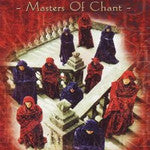Chants & the MEDIEVAL era
Kia'ora! Welcome!
I am sure that you will all agree that a quick look at the variety of western art music available, reinforces that there is no way a survey of music from the Medieval era to the 20th century can cover the great works of so many composers and the variety of styles that have existed through these ages. Taking this into consideration, the idea of mirroring the study of Musi102 students at the University of Otago, gives us a starting point to delve into some spectacular works and hopefully bring some smiles to the faces of western art music lovers. I rather like the following writings of Richard Taruskin (Oxford History of Western Music) "Inclusion and omission imply no judgment of value here." If you so wish, join me on this little journey through the ages and listen with openness and you may find that you enjoy yourself! It is impossible to cover everything that we talk about in Musi102, consequently, each week I will point out a few things that I think you may find interesting.
This week we will start with a quick look at some stunning work from the the medieval era (for the purposes of this study the 'middle ages' 950 - 1440AD).
Well where do we start? Perhaps the best idea is to consider how music from 1000 years ago (!!!) survived to be reproduced into the 21st century and 2014...extraordinary isn't it?... One of the most important technologies invented, that many musicians still rely on today, is notation. Around the 900's neumes or neumatic notation began to be used as memory aids for vocal chant recitation. These memory aids eventually helped to standardise music of the church.
So was all medieval vocal music sacred? No, hardly... however the recording of this music via neumes helps us today to have some idea of what sacred music sounded like so long ago. As the Roman church had reason to standardise music, neumatic notation was used. From our point of view this is fabulous, as this has left us with some idea of what sounds were important in sacred vocal music of the time, and what styles were utilised.
For example: plainchant (chants) commonly used monophony (single melodies), and polyphony (multiple melody lines).
Polyphony might be thought of as waves of melodic lines against each other. I like to think of them like this pretty picture:

(Image sourced from google images)
Polyphonic music had it's beginnings in monasteries. Gregorian chant is a type of plainchant.
Here is an example of a monophonic (single melody) plainchant from the late medieval era.
http://www.youtube.com/watch?v=2HEKhr002Ts
Listen to this example of organum (an early type of polyphonic music based on plainsong with an accompaniment sung below or above the melody)... how does it contrast? What do you hear?
http://www.youtube.com/watch?v=Gq5B3M4jRtQ
Of particular interest is that Leonin - the composer of this second example - is one of the earliest known composers of polyphonic organum, and he worked at Notre Dame in Paris. As Taruskin points out, the work of the musicians at Notre Dame was important in standardising music across greater territories:
"The musicians of Notre Dame symbolized the strong, united church they served, and promoted catholicism in the literal and original sense of the word. As we know from the dispersion of their works in the extant sources, their program was successful. The central Parisian repertory was copied far and wide and sung well beyond its home territory." (Richard Taruskin,The Oxford History of Western Music: Chapter 6 Notre Dame de Paris).
So there is a little taster of medieval sacred vocal music to begin with... If you are interested in checking out some other music related to this time, here are a few items that we have instore that you may enjoy:

http://relicsmusic.co.nz/products/buranacarmina-orffandoriginalmedievalnew

http://relicsmusic.co.nz/products/cantogregorianogregorianchants2cdsnew

http://relicsmusic.co.nz/products/mastersofchantgregorianchantsdvdnew
See you next week!
So... every now and then I do a little bit of tutoring at the University of Otago. This week tutorial classes began for Music students studying Musi102 - Music in Western Culture. I love this paper - a mix of historical context, a lot of listening and reading from the Medieval period through to the 20th Century. It is a quick dance through the centuries that gets my imagination flying and always leaves me in awe of the many great composers that have graced this earth. So in the midst of some pretty interesting lectures this week, I got to thinking, how about we do a blog that mirrors the adventure these students go on?
Long story short if you love CLASSICAL music then this blog could be something you might enjoy. Every week I will post music by the composers these students are studying, along with little tidbits of interesting info about the composers as we travel through the ages.
Next →








